How ABA Therapy Improves Participation In Family Activities

Overview of ABA Therapy and Its Impact on Family Engagement
Applied Behavior Analysis (ABA) therapy is a scientifically validated approach recognized for its effectiveness in supporting individuals with autism spectrum disorder (ASD). By focusing on developing key skills such as communication, social interaction, and independence, ABA therapy facilitates meaningful participation in family activities. This article explores how ABA therapy fosters family engagement by improving behaviors, promoting independence, and empowering caregivers, ultimately strengthening family dynamics.
Understanding ABA Therapy: Foundations and Applications
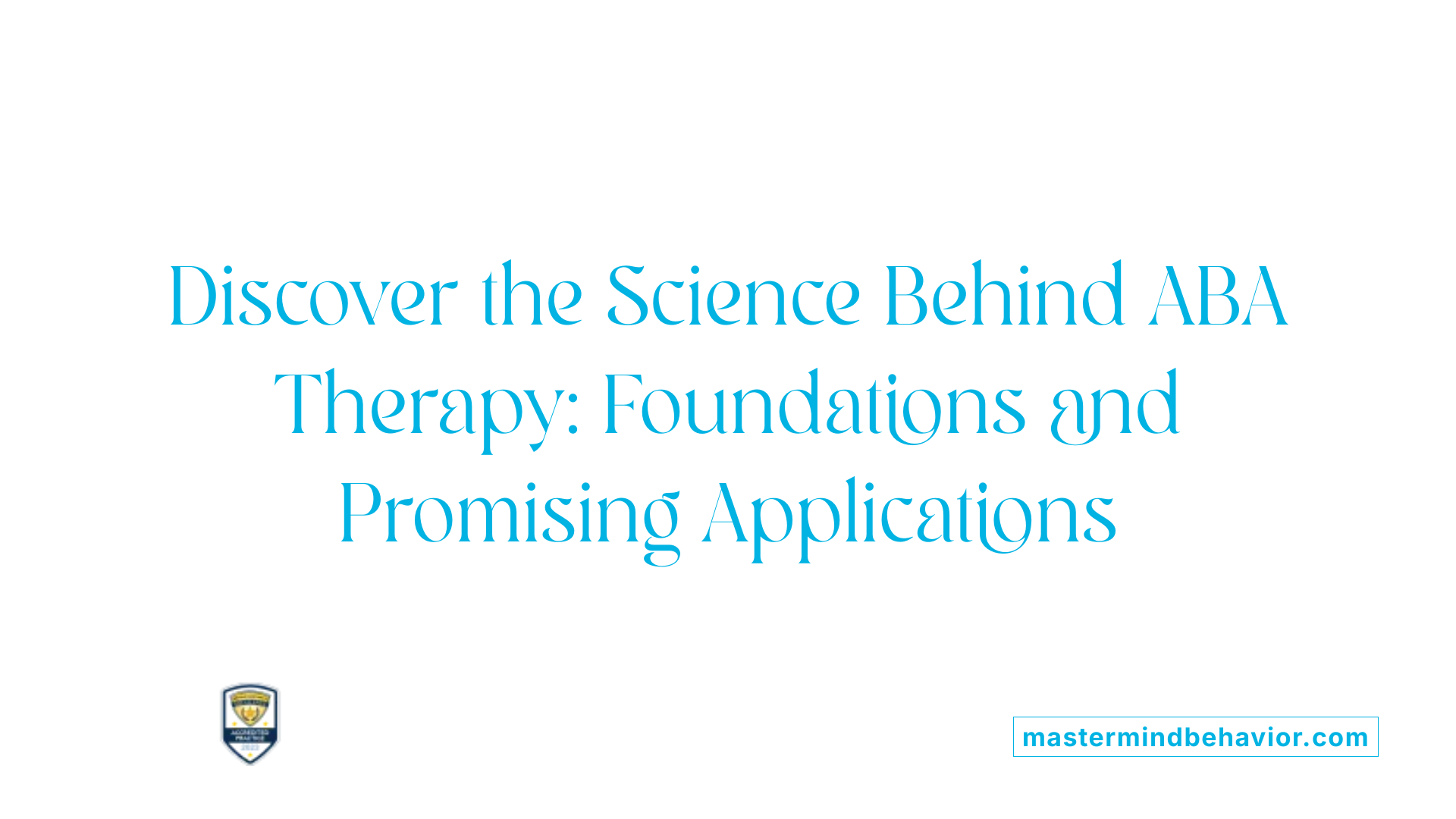
What is applied behavior analysis (ABA) therapy and how is it used to support individuals with autism?
Applied Behavior Analysis (ABA) therapy is a scientifically validated approach that uses the science of learning and behavior to support children with autism spectrum disorder (ASD). It focuses on increasing helpful behaviors while reducing harmful or hindering ones by understanding how behavior works and is influenced by the environment.
ABA therapy targets essential skills such as communication, social interaction, self-care, and academic abilities. It employs behavior modification techniques, including observation of antecedents (what happens before a behavior), the behavior itself, and consequences, to shape and encourage positive actions.
One of the central strategies in ABA is positive reinforcement, where rewards follow target behaviors, increasing the likelihood that these behaviors will continue. Structured teaching methods, like Discrete Trial Training (DTT), and more naturalistic approaches, such as Pivotal Response Treatment (PRT), are commonly used to facilitate learning.
ABA programs are highly customizable; they are designed based on detailed assessments to address each individual's unique needs and goals. Board Certified Behavior Analysts (BCBAs) oversee and tailor these interventions, ensuring ongoing data collection and adjustments to maximize progress.
Research supports that intensive and long-term ABA therapy yields significant improvements in adaptive behaviors, communication, social skills, and emotional development. It promotes skill generalization across environments, helping children gain independence in daily tasks and participate fully in family and social settings.
ABA’s versatility allows therapy to be provided at home, school, or the community, often involving parents and caregivers to ensure consistent application of strategies. This collaborative approach enhances the effectiveness of interventions, supports family dynamics, and reduces stress.
Recognized by major health organizations as an evidence-based best practice for autism treatment, ABA remains a cornerstone of developmental support, offering children with ASD opportunities for improved independence and social integration.
Qualified Professionals Delivering ABA Therapy
Who Typically Provides Applied Behavior Analysis Therapy and What Qualifications Do These Professionals Have?
Applied Behavior Analysis (ABA) therapy is delivered by a specialized team of professionals dedicated to supporting children with autism. The primary providers include Board Certified Behavior Analysts (BCBAs), Licensed Behavior Analysts, Licensed Assistant Behavior Analysts, as well as licensed counselors, psychologists, and social workers with expertise in behavior analysis and autism interventions.
Registered Behavior Technicians (RBTs) often provide hands-on assistance during therapy sessions, working directly with the child under the close supervision of a BCBA or other licensed behavior analyst. These professionals conduct critical activities such as Functional Behavior Assessments and develop customized Behavior Support Plans tailored to each child's unique needs.
Qualifications and Certifications
Qualified ABA professionals hold advanced degrees in psychology, education, or related fields, accompanied by certifications such as BCBA or RBT credentials. These certifications confirm their knowledge of behavior analysis principles and ethical standards. Continuing education ensures clinicians stay updated on the latest research and intervention strategies, guaranteeing high-quality care.
Roles of BCBAs and RBTs
BCBAs are responsible for designing, overseeing, and adjusting individualized ABA programs. They analyze data collected from therapy sessions to monitor progress and make necessary modifications. RBTs implement these programs directly, engaging children in learning activities and applying positive reinforcement techniques to encourage skill development.
Supervision and Ethical Standards
Effective ABA therapy depends on ongoing supervision by certified professionals to maintain treatment fidelity and ethical practice. These standards ensure that interventions respect each child's dignity, prioritize safety, and focus on outcomes that promote independence and improved family engagement.
| Role | Qualifications | Responsibilities |
|---|---|---|
| Board Certified Behavior Analyst (BCBA) | Master's degree, BCBA certification | Designs and supervises ABA programs, monitors progress, adjusts interventions |
| Registered Behavior Technician (RBT) | High school diploma, RBT credential | Implements ABA plans under BCBA supervision, collects data, applies reinforcement |
| Licensed Counselors/Psychologists | Advanced degrees, licensure | Provides additional clinical support, enhances therapeutic outcomes |
This team-based approach ensures that ABA therapy is effectively tailored, ethically delivered, and maximizes benefits for children and their families.
Core Benefits of ABA Therapy for Children with Autism
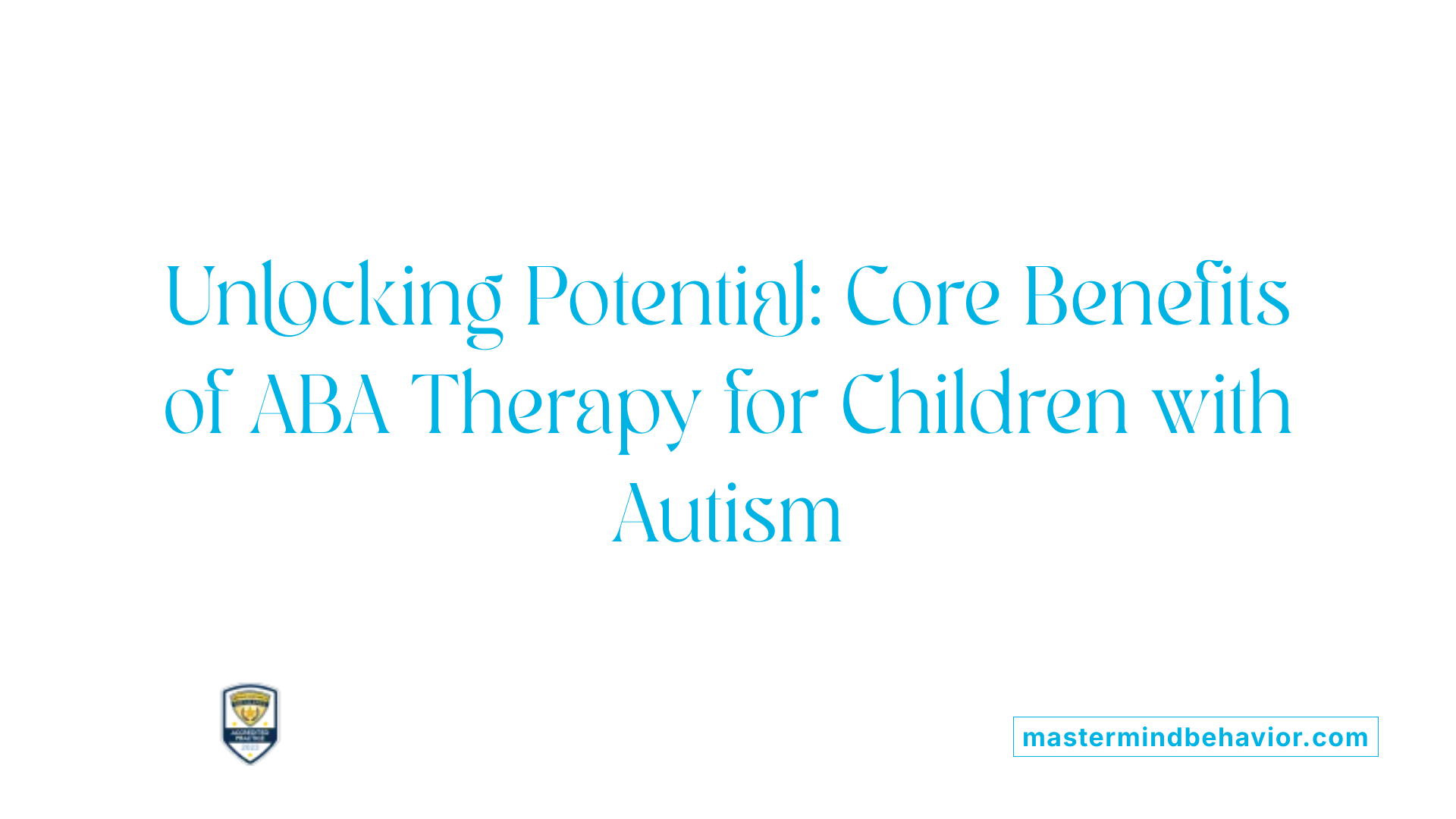
What are the main benefits of ABA therapy for individuals with autism?
Applied Behavior Analysis (ABA) therapy offers several significant benefits for children with autism. One of the most notable improvements is in communication skills. ABA helps children develop expressive language and functional communication through techniques like visual aids, picture cards, and structured interactions. This allows children to better express their needs and engage more fully in social settings.
Additionally, ABA therapy targets the reduction of challenging behaviors by employing positive reinforcement strategies. This approach encourages desired behaviors such as following directions, turn-taking, and sharing, while decreasing problem behaviors that can hinder development and social integration.
ABA also promotes enhanced independence in daily living. Children gain confidence and skills to perform self-care tasks like brushing their teeth or tying their shoes, reducing reliance on caregivers and adapting more effectively to their environments.
Beyond behavioral and practical skills, ABA supports emotional and social development. Early intervention with individualized programs helps children build foundational social skills, alleviate separation anxiety, and improve participation in family and community activities, leading to better family dynamics and overall quality of life.
Overall, ABA is a scientifically validated, tailored therapy that fosters communication, social interaction, behavior management, and independence, helping children with autism reach their full potential.
Designing Individualized ABA Programs to Foster Family Engagement
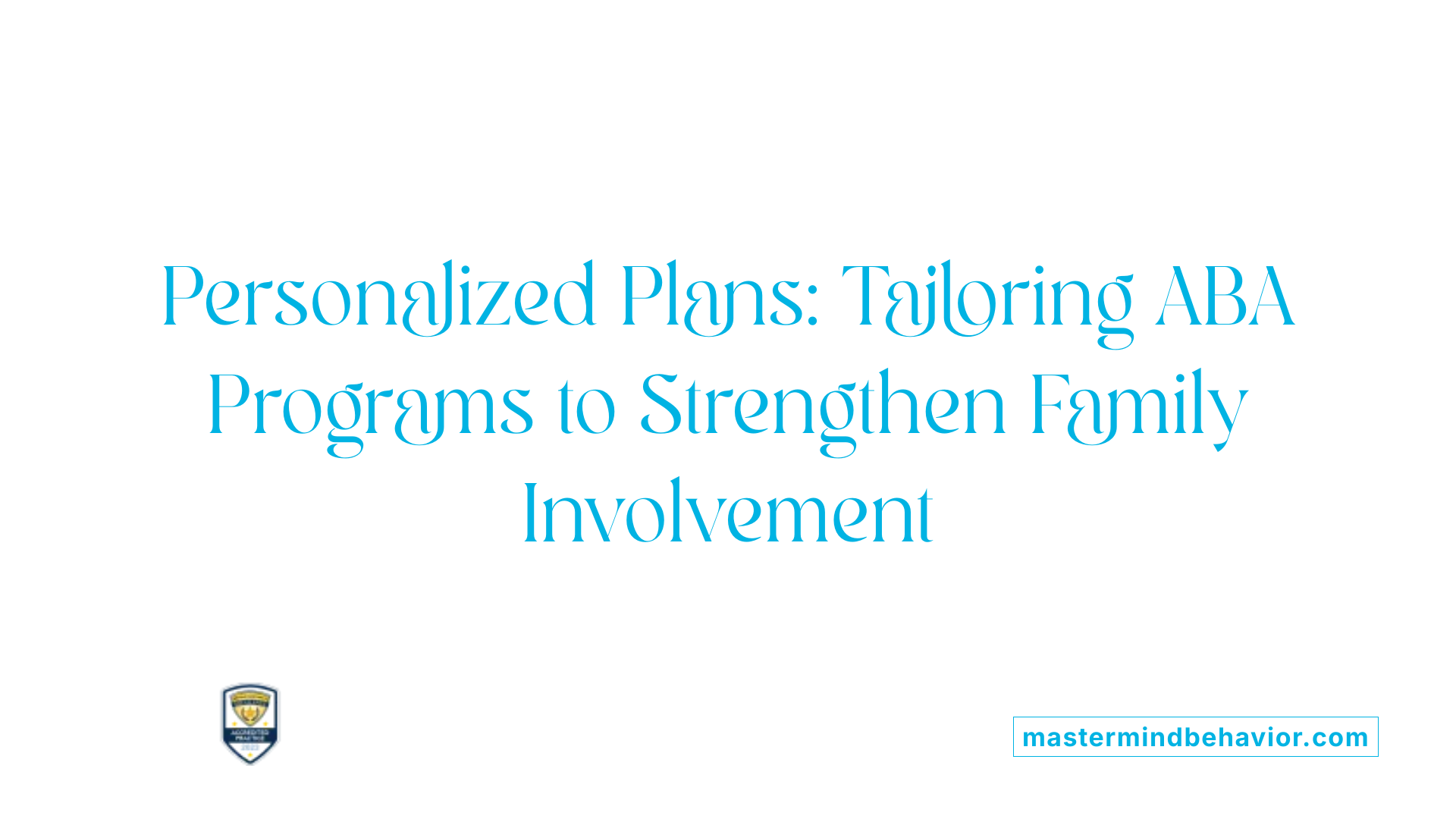
How is an ABA therapy program designed and customized for an individual with autism?
Creating an effective ABA therapy program begins with a comprehensive assessment that looks closely at an individual's strengths, challenges, interests, and learning preferences. This thorough evaluation allows therapists to develop personalized goals that focus on meaningful skills such as communication, social interaction, and daily living activities.
Personalized intervention strategies are then crafted to suit the unique needs of each child, selecting reinforcers and teaching tools that resonate with their tastes. For example, visual supports or preferred activities may be incorporated to enhance engagement.
A critical element of the program design is ongoing data collection and progress monitoring. This data-driven approach ensures that interventions can be adjusted regularly to better support the child's evolving needs and to maximize their growth.
Adaptations are also made for sensory sensitivities and cultural considerations, creating a respectful and comfortable environment that supports learning. These adaptations help to address individual differences that might otherwise hinder progress.
Collaboration with caregivers plays a vital role throughout the therapy process. By involving parents in goal-setting, training, and consistent application of strategies at home and in other environments, the program encourages continuity and reinforces skills. This teamwork not only accelerates mastery but also promotes smoother generalization of skills into everyday family life.
In summary, an individualized ABA program is a dynamic and tailored plan that integrates detailed assessments, personalized goals, data-driven adjustments, sensory and cultural accommodations, and strong caregiver partnerships to foster effective therapy and greater family engagement.
The Vital Role of Families and Caregivers in ABA Therapy
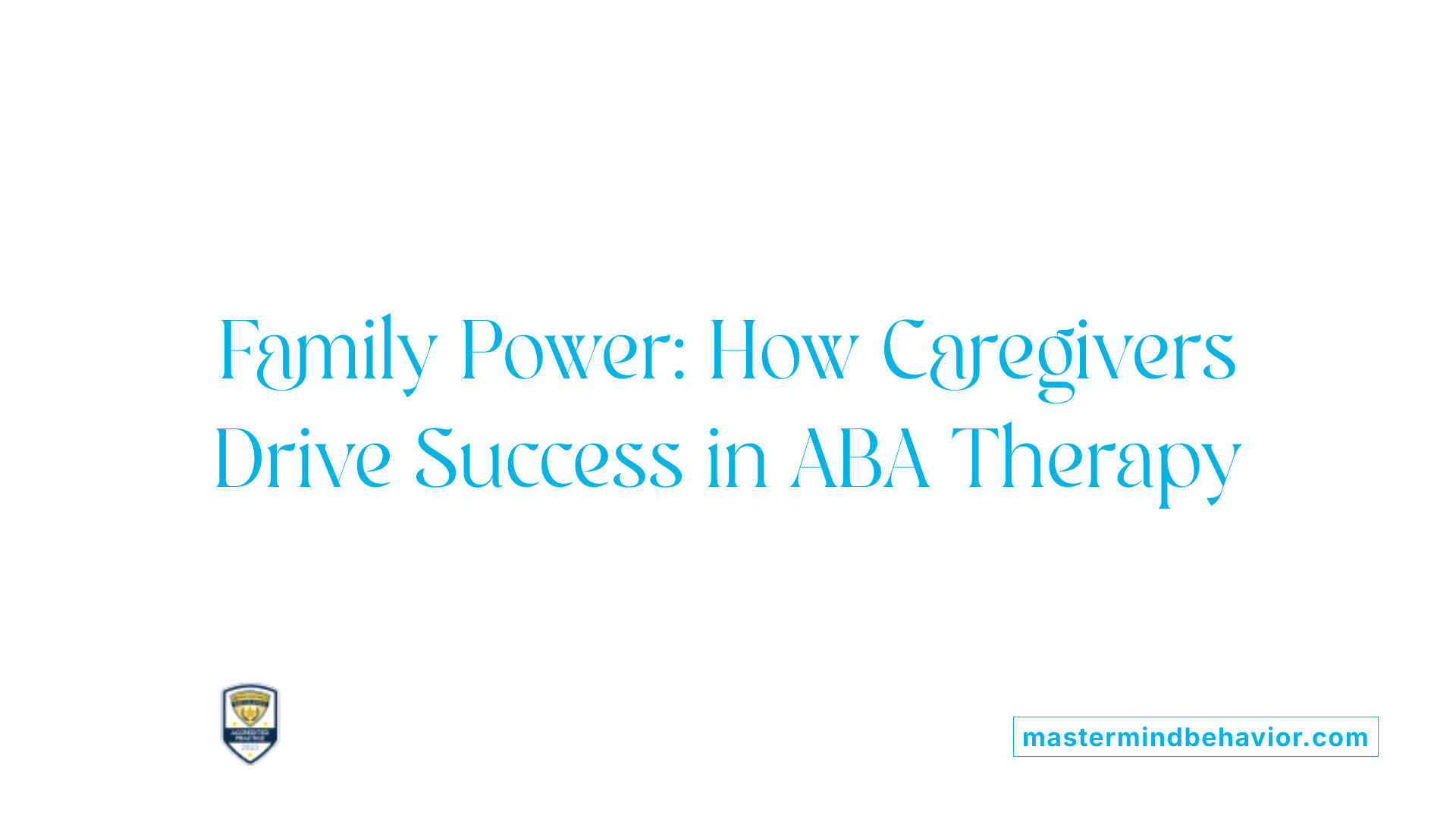
What role do families and caregivers play in ABA therapy for autism?
Families and caregivers are essential partners in ABA therapy, actively supporting the child's learning beyond clinical settings. Their involvement ensures consistency across various environments such as home, school, and community, which significantly accelerates progress and skill mastery. Training provided to parents enables them to apply ABA techniques effectively, including strategies like positive reinforcement, use of visual aids, and behavior management.
How do parent training and caregiver-guided sessions support ABA therapy?
Parent training sessions equip caregivers with knowledge and practical skills to carry out therapy techniques themselves. Caregiver-guided sessions allow parents to learn by observing and participating directly, facilitating seamless integration of therapy goals into daily routines. This hands-on involvement helps children generalize their skills, making them more adaptable in natural settings.
Why is collaboration in goal-setting important?
Collaborative goal-setting between families and ABA professionals tailors treatment plans to the child’s unique needs and family lifestyle. When parents and therapists work together, goals become more relevant and achievable, increasing motivation for both the child and caregivers. Such collaboration fosters a team approach that strengthens the intervention’s effectiveness.
What are the benefits of consistent home reinforcement?
Consistent application of learned strategies at home reinforces progress made during therapy sessions. This continuous practice supports skill retention, reduces confusion, and diminishes behavioral challenges. Using home-based therapy plans ensures that children build independence with support from familiar people, which boosts confidence and comfort.
How does parental involvement impact family dynamics and stress?
Active parental participation in ABA therapy improves family dynamics by promoting understanding of the child's needs and behaviors. It reduces stress by providing caregivers with effective tools to manage challenges and celebrate milestones. Open communication between families and therapists creates a supportive community that encourages emotional well-being and resilience within the household.
How ABA Therapy Enhances Communication to Support Family Interaction
Communication Skill Development
ABA therapy is highly effective in improving communication skills for children with autism. Through individualized programs, children learn essential expression and comprehension abilities. These skills are foundational for meaningful interaction both within therapeutic settings and at home, fostering better family engagement.
Use of Visual Supports Like Picture Cards and Schedules
A central technique in ABA involves the use of visual aids such as picture cards and schedules. These tools help children understand and organize their daily activities, reducing frustration and increasing clarity in communication. Visual supports also assist children in expressing needs and preferences more effectively to their family members.
Improved Expression Leading to Better Family Participation
As children develop stronger communication skills via ABA therapy, their ability to participate in family activities improves. With enhanced expression comes greater confidence and willingness to engage in conversations and shared experiences, enabling more positive and rewarding interactions with caregivers and relatives.
Positive Reinforcement Encouraging Communication Behaviors
ABA therapy uses positive reinforcement to encourage desired communication behaviors. When a child successfully uses a word, gesture, or visual aid to communicate, immediate rewards reinforce that effort. This motivator helps solidify new skills and promotes ongoing communication, which benefits family relationships through clearer and more frequent exchanges.
Building Independence Through ABA to Encourage Family Engagement
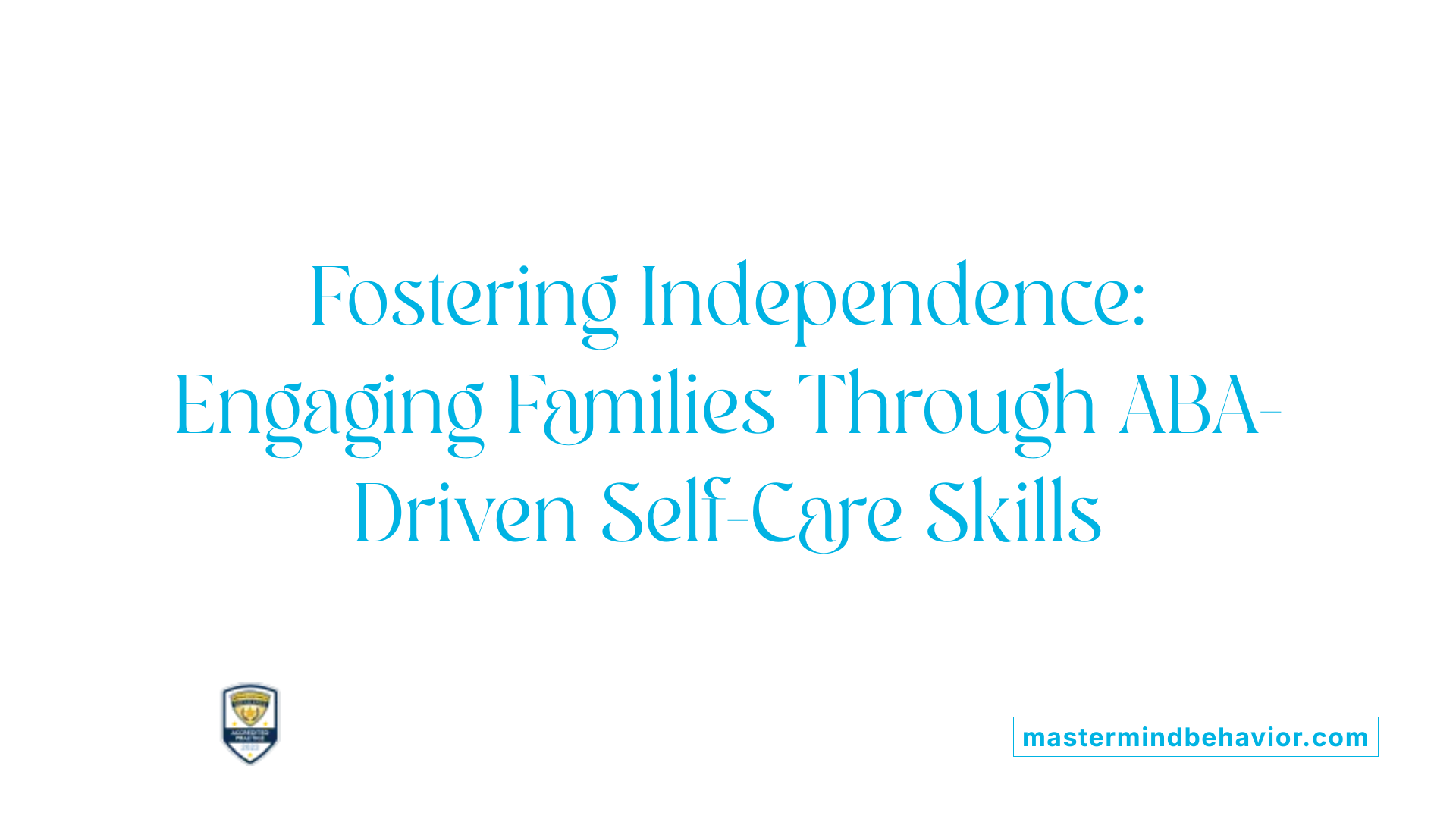
Teaching Daily Living Skills Such as Grooming and Hygiene
ABA therapy helps children develop independence by teaching essential daily living tasks, including brushing teeth, grooming, and hygiene routines. These skills build confidence and promote self-care, allowing children to participate more actively in family life without constant assistance.
Increasing Self-Reliance to Reduce Family Burden
By increasing children’s ability to perform daily activities independently, ABA reduces the caregiving load on family members. This self-reliance fosters a more balanced family dynamic and lessens stress, enabling parents and siblings to engage with the child in more meaningful ways.
Structured Social Skills Training for Better Social Interaction
ABA incorporates structured social skills training such as turn-taking, sharing, greeting, and other interaction behaviors. These skills improve the child's participation in social and family settings, creating more positive and fulfilling interactions.
Generalization of Skills to Home and Community Environments
A vital component of ABA is helping children generalize newly learned skills across different settings—home, school, and community. Consistent practice in various environments ensures that children can use their communication, social, and self-care skills broadly, enhancing engagement with family activities and community life.
Early Intervention and Its Long-Term Impact on Family Life
What Are the Critical Developmental Windows for Starting ABA?
Early intervention with ABA therapy focuses on taking advantage of critical developmental windows, typically during early childhood, when the brain is most receptive to learning new skills. Starting therapy during this period can lead to substantial improvements in communication, social skills, and behavior, laying a strong foundation for future growth and integration into family life.
How Does Early Therapy Reduce Challenging Behaviors?
Early ABA therapy uses positive reinforcement and individualized strategies to reduce challenging behaviors such as tantrums, aggression, or withdrawal. By addressing these behaviors promptly, children experience fewer barriers to interacting positively within their family and social environments. This proactive approach lessens stress for both the child and family members.
What Foundational Skills Develop to Aid Family Integration?
ABA therapy targets essential foundational skills like communication, self-reliance, and social behaviors early on. Skills such as following directions, turn-taking, and daily living activities like brushing teeth or dressing empower children to participate more fully in family routines. These developments foster independence and create more opportunities for meaningful family engagement.
What Are the Long-Term Emotional and Social Benefits?
Research supports that consistent early ABA intervention leads to enhanced social integration and emotional development. Children show improvements in adaptive behaviors, reduced separation anxiety, and better emotional regulation. These outcomes help them build stronger family relationships and improve overall quality of life, supporting healthier family dynamics over time.
Addressing Criticisms and Ensuring Ethical ABA Practices
Are there any criticisms or limitations associated with ABA therapy?
Applied Behavior Analysis (ABA) therapy, while backed by scientific evidence and known for producing positive outcomes, has faced some criticisms. Traditionally, ABA was sometimes seen as overly focused on compliance and the reduction of unwanted behaviors, which raised concerns about neglecting the emotional well-being and individuality of the child.
Modern ABA approaches have evolved to be more naturalistic and child-centered, incorporating play-based techniques and tailoring interventions to the unique needs of each individual. These updates emphasize respect for the child's dignity and emotional health.
Accessibility and affordability of ABA therapy remain ongoing challenges. Intensive programs may not be easily available or affordable for every family, impacting consistent access to care.
The importance of ensuring that ABA is delivered by qualified professionals is critical. Certified behavior analysts collaborate closely with families to create customized, family-centered care that honors individual preferences.
Ongoing dialogue about ethical practices and individualized treatment helps ABA therapy evolve, striving to address past criticisms and better support the well-being of children and their families.
Maximizing Family Participation Through Evidence-Based ABA Therapy
ABA therapy offers a robust, science-backed framework for enhancing the participation of children with autism in family activities. By targeting key developmental domains like communication, social skills, and independence, it empowers children to engage more fully with loved ones and everyday family routines. Central to its success is the active involvement of families and caregivers, whose training and collaboration ensure that skills generalize beyond therapy settings into real life. Early intervention further amplifies these benefits, providing foundational gains that support long-term social integration. While recognizing the therapy’s challenges and the importance of ethical practice, ABA remains a vital tool for fostering stronger family bonds and improving quality of life for children with autism and their families.
References
- The Importance of Parental Involvement in ABA Therapy
- Benefits of ABA Therapy for Children with Autism
- The effectiveness of applied behavior analysis program ...
- Applied Behavior Analysis (ABA)
- The Controversy Around ABA
- Concerns About ABA-Based Intervention: An Evaluation ...
- Is ABA therapy harmful? The controversy explained
- The Role of Parent Involvement in ABA Therapy Success
Recent articles

Understanding Functional Communication Training (FCT) In ABA Therapy
Unlocking Communication: How Functional Communication Training Transforms ABA Therapy
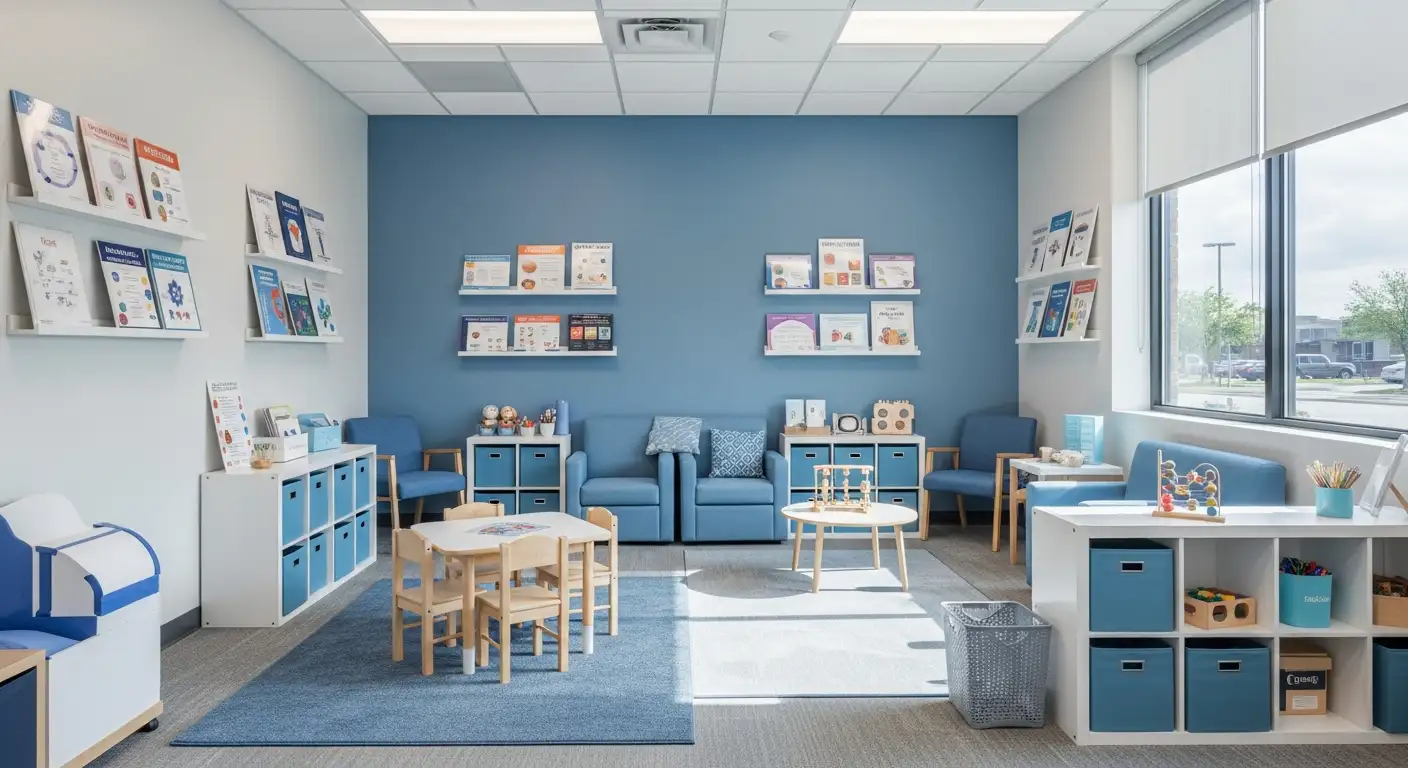
ABA Therapy To Reduce Argumentative Behavior In Children
Transforming Challenging Behaviors: The Role of ABA in Autism Care
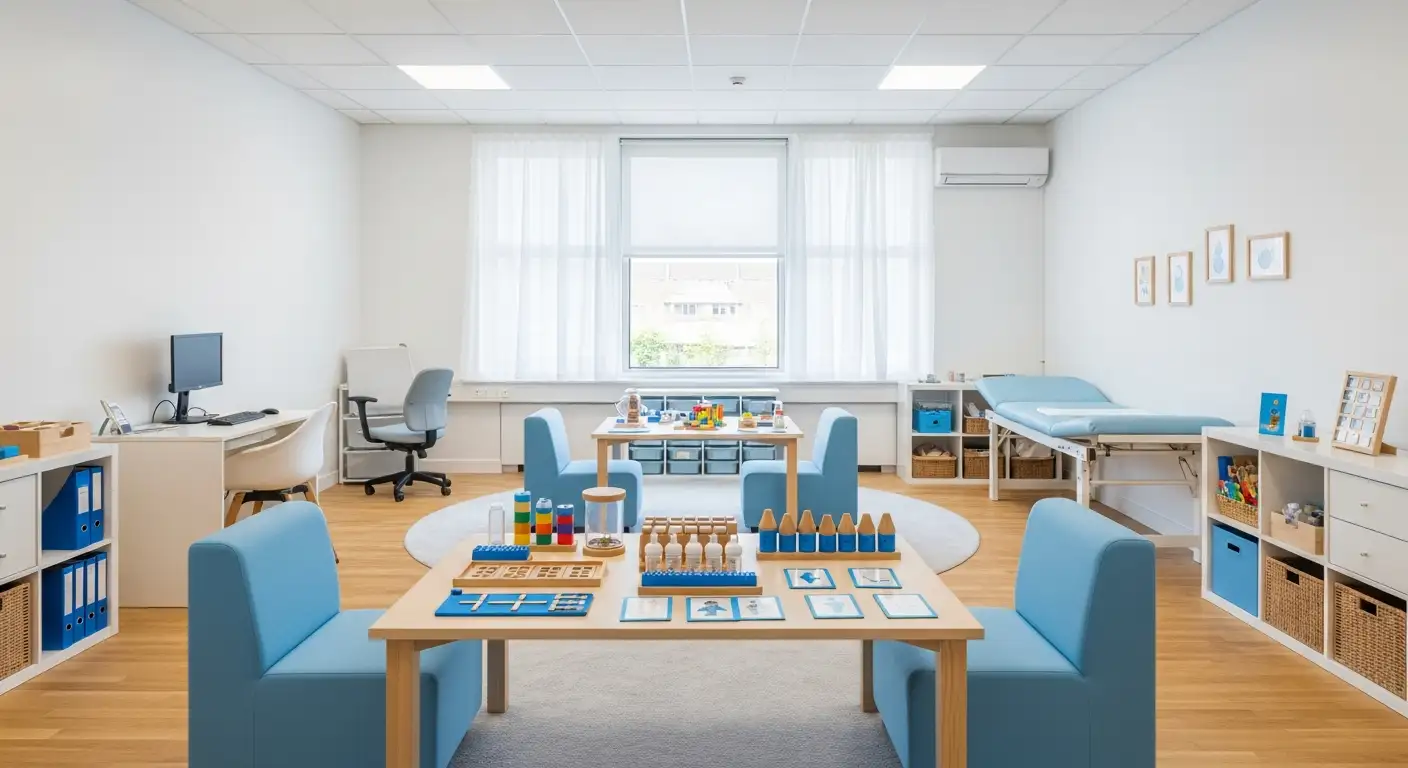
Teaching Independent Decision Making Through ABA
Unlocking Autonomy: The Role of ABA in Fostering Independent Decision Making

The Role Of ABA Therapy In Supporting Children With Social Challenges
Unlocking Social Potential: How ABA Therapy Empowers Children with Autism

The Role Of ABA Therapy In Developing Self Determination Skills
Unlocking Independence: How ABA Therapy Empowers Self-Determination in Autism

ABA Therapy For Supporting Flexibility In New Social Groups
Enhancing Social Adaptability in Autism Through Applied Behavior Analysis



